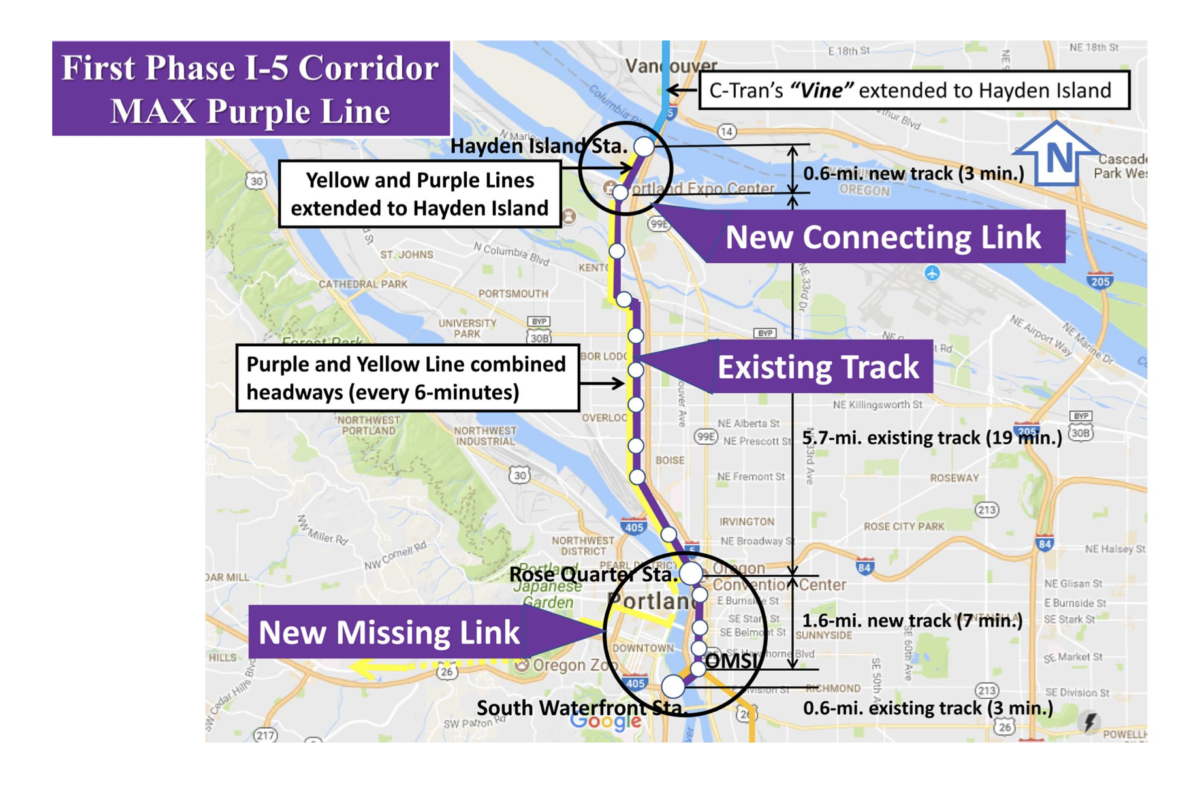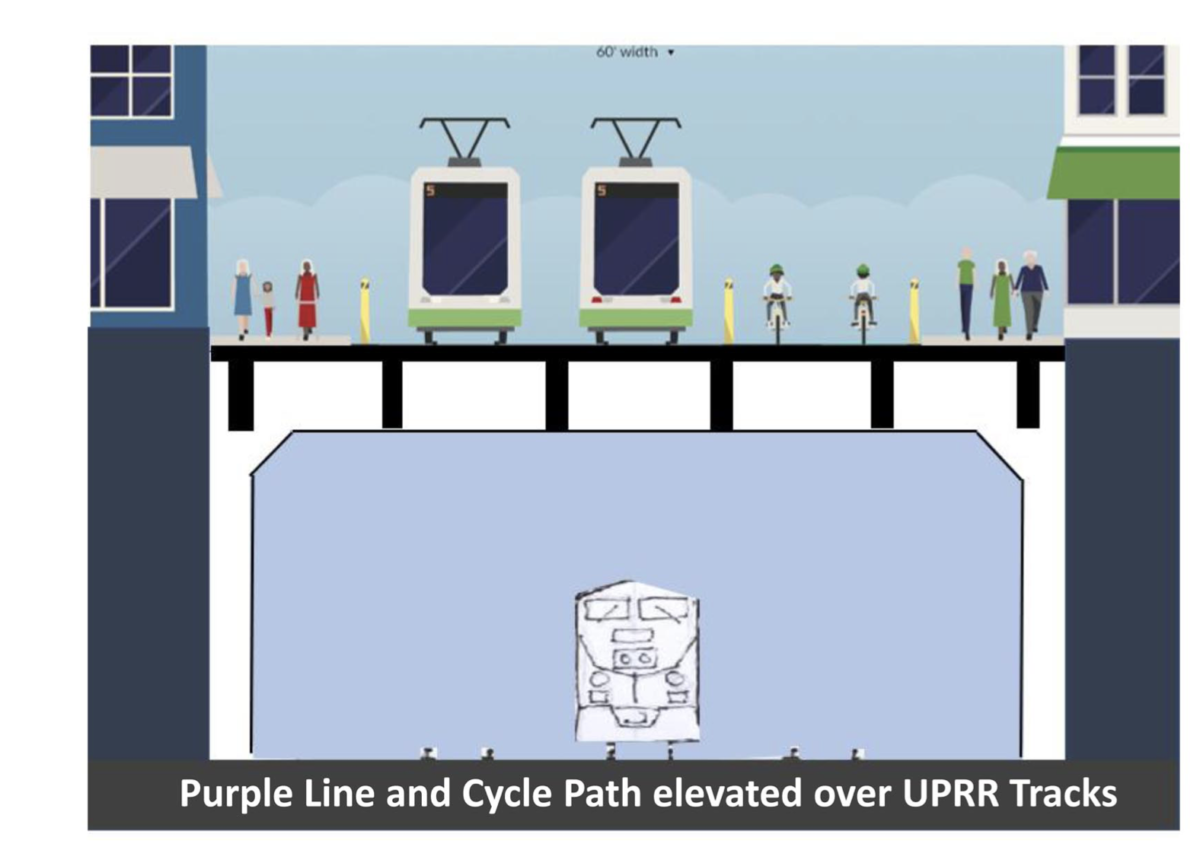
(Graphics: Association of Oregon Rail and Transit Advocates)
How do you solve a problem like congestion?
“If people had a better way of using public transit, they wouldn’t be in their car in that corridor.”
— Jim Howell, rail advocate and freeway fighter
As we know, the Oregon Department of Transportation says the answer to the traffic on I-5 between the Rose Quarter and OMSI is to expand the freeway. This has been a contentious plan for years, and has now faced even more scrutiny from activists and more assistance from Metro Council and the governor’s office.
Environmental activists say ODOT hasn’t done a sufficient job assessing the environmental impacts of this expansion project and looking into reasonable alternatives, like transit. No More Freeways PDX is suing ODOT on these grounds. But what could this transit alternative look like?
Enter the proposed MAX ‘Purple Line,’ which would run from Hayden Island to the South Waterfront, providing an alternative that the transit advocates behind the proposal say would unclog the freeway and patch up holes in the regional light rail system. It was a solid idea when we first looked into it eight years ago and it’s been bouncing around the inboxes of influencers and policymakers ever since.
Jim Howell, who we’ve called ‘Portland’s Idea Man,’ is the veteran transportation activist and retired strategic planner for the Association of Oregon Rail and Transit Advocates (AORTA) who dreamed up the “Common Sense Alternative” to the Columbia River Crossing and has led the charge behind the Purple Line concept. He agrees with the sentiment that ODOT still hasn’t done enough too consider alternatives to freeway expansion in the Rose Quarter.
In addition to transit, the proposed Purple Line would also add a parallel ‘bicycle freeway’ in the form of a neat elevated cycling and pedestrian platform that would, at one point, run above the Union Pacific rail tracks in the central eastside (see image below). Howell has compared this element of the plan to the High Line in New York City: a former freight rail line-turned public park and tourist attraction. A similar concept in Portland would bring business and recreation opportunities as well as improved transit.
Eventually, Purple Line proponents want to take it all the way down to Tigard or Wilsonville, but addressing the Rose Quarter is the first priority.
Advertisement
“ODOT has never dealt with any kind of alternative to widening the freeway,” Howell says. “If people had a better way of using public transit, they wouldn’t be in their car in that corridor. If you could reduce demand on the freeway in this corridor, [ODOT] wouldn’t even be thinking of spending a billion dollars to widen it there.”
Howell says there are two alternatives to freeway expansion in terms of reducing congestion: adding congestion pricing or providing a transit alternative (or both). Howell, along with many other activists and transportation experts, point out that not only is the increased capacity approach of adding more lanes to I-5 indicative of a long-term commitment to car-centric transportation – it also wouldn’t even reduce congestion in the long-run.
Without a transit alternative accompanying congestion pricing, only half of the transportation reform equation would be solved.
“We don’t only have to make it harder to drive, we also have to make it easier to use public transit,” Howell says.


Right now, you have to cross the river twice and go through downtown in order to take the MAX through the Rose Quarter area. The Portland Streetcar covers this distance on the east side of the Willamette River, but Howell says it ineffectively links up with the MAX. He sees the Purple Line as a way to fulfill Portland’s potential to have great public transit.
Howell, who was on the front lines of the fight against the vanquished Mt. Hood Freeway, knows freeway projects can die, and he says he expects the Rose Quarter project to stall for quite some time, and hopefully change course in the future.
“I’ve been involved in killing highways for 40 years,” Howell says. “This project is going to waste millions and millions of dollars and go nowhere until ODOT gets good leadership.”


